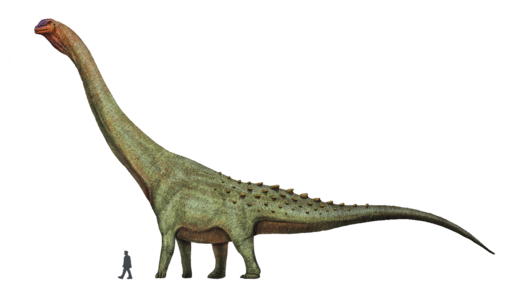The Giant of Patagonia
Patagotitan was one of the largest dinosaurs that ever walked the Earth.

| Meaning | Titan from Patagonia [Patago-titan] |
| Pronunciation | PAT-ah-go-TY-tan |
| When: | Late Cretaceous (about 102–95 million years ago) |
| Where: | South America (Argentina) |
| What: | Sauropod (Titanosaur) |
| Weight: | Estimated around 55–69 metric tons |
| Length: | Approximately 37 meters (121 feet) |
| Diet: | Herbivorous (ate high vegetation like conifers) |
| Discovered: | First described by José Luis Carballido and colleagues in 2017 |
This colossal sauropod lived during the Late Cretaceous period, about 100 million years ago.
Patagotitan measured around 37 meters (121 feet) in length and weighed an astonishing 70 tons, making it one of the biggest land animals known to science.
Patagotitan belonged to the titanosaur group, characterized by their enormous size, long necks, and tails, and massive, pillar-like legs.
It roamed the ancient landscapes of what is now Patagonia, Argentina, where its fossils were discovered.
These discoveries included remarkably complete skeletons, allowing scientists to gain a detailed understanding of its size and structure.
The discovery of Patagotitan has provided significant insights into the lives of the largest dinosaurs.
Its massive size would have required vast amounts of plant material for sustenance, and it likely used its long neck to reach high vegetation.
This dinosaur’s sheer size would have been a deterrent to most predators, ensuring it lived a relatively peaceful life once it reached adulthood.
